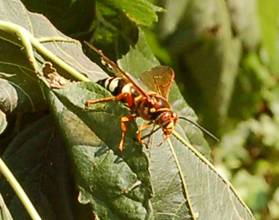Loosestrife – A Plant To Avoid
Q: I was in a garden center recently when I noticed that they were selling purple loosestrife, ^Lythrum salicaria^ ‘Dropmore Purple.’ I have heard that loosestrife is an invasive plant. Is the sale of this plant legal in Georgia? Or is this a “sterile” cultivar?
A: According to Arthur Miller at the USDA Animal and Plant Health Inspection Service (APHIS), twenty four states consider purple loosestrife to be a noxious plant. It was introduced to North America from Europe in the early 1800’s. It has a showy purple flower spike and can be quite attractive in a garden. However, because each plant produces an average of 2.7 million seeds, once it finds conditions to its liking, loosestrife can be very invasive. It clogs waterways, out-competes native plants and prevents ducks from nesting.
At one time, selections such as ‘Morden Pink’ and ‘Dropmore Purple’ were considered sterile but research at the University of Minnesota proved this to be a false assumption. Georgia has not classified purple loosestrife a noxious weed because no large invasions of the plant have occurred here ^YET^. Our lakesides and river marshes make perfect loosestrife habitat if it should escape from landscapes. Considering our experience with kudzu, Chinese wisteria and privet hedge, loosestrife should be avoided.













